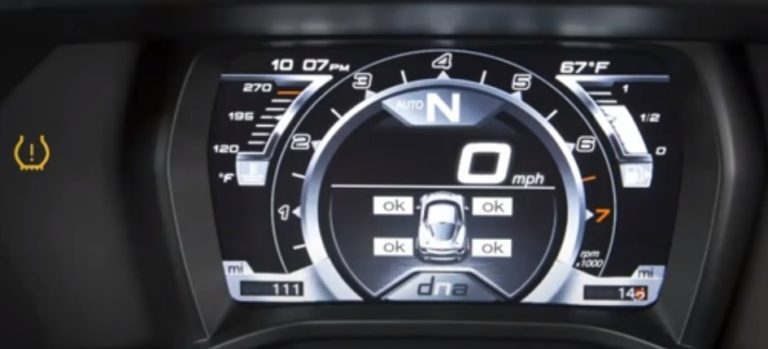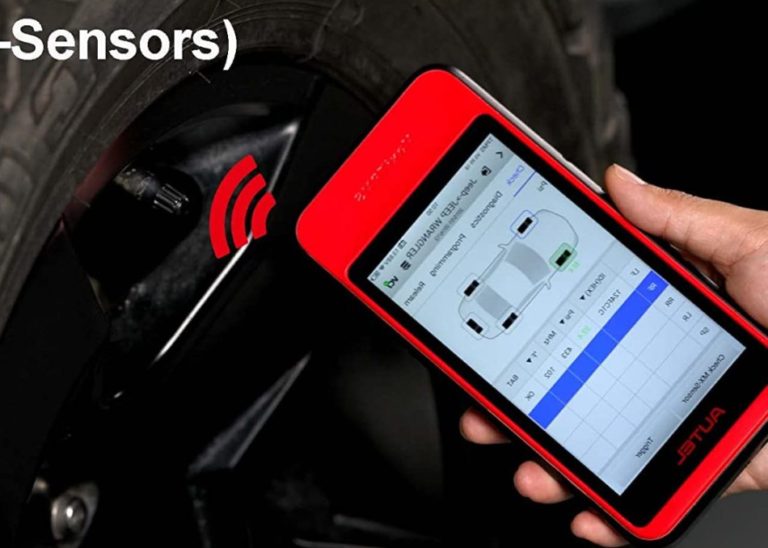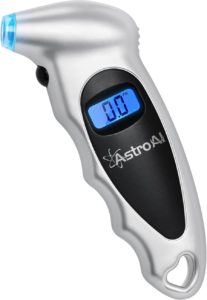Tire Pressure Monitoring Systems, or TPMS for short, are a fantastic safety feature found in all modern cars. They work by constantly keeping an eye on the air pressure within each tire, making sure it stays within the ideal range. If the pressure falls outside this range, the system quickly alerts the driver so they can take action. Maintaining the correct tire pressure is essential for improved fuel efficiency, better vehicle handling, and most importantly, reducing the chances of tire-related accidents. In short, TPMS is a key component of today’s automotive technology that helps make our roads safer and our journeys more enjoyable.
How Does the Alfa Romeo 4c TPMS Work?
Sensors in each tire: The Alfa Romeo 4C TPMS features individual sensors within each tire that monitor air pressure continuously, ensuring accurate readings.
Wireless communication: These sensors transmit real-time tire pressure data wirelessly to the vehicle’s onboard computer.
Monitoring thresholds: The system compares the live data against predetermined pressure thresholds, specifically tailored for the Alfa Romeo 4C’s optimal performance and safety.
Visual and auditory alerts: If tire pressure falls outside the acceptable range, the TPMS triggers visual and auditory warnings on the dashboard, alerting the driver to check and adjust the tire pressure.
Battery life monitoring: The TPMS also monitors the battery life of each sensor, notifying the driver when it’s time for replacement to maintain accurate tire pressure monitoring. The tire pressure light on the dashboard will flash when the system senses a faulty sensor or fault within the system.
Alfa Romeo 4c Tire Pressure Light Reset Procedure
When the tire pressure light illuminates, pull over and check your tire pressure.
Figure out which tire is causing the tire pressure light to turn on and adjust the tires accordingly. (If you’re on the road use a tire pump like this.)
Always adjust tire pressures when the tires are cold to get the most accurate readings.
After adjusting tire pressures to the recommended levels, drive the vehicle.
We recommend driving the vehicle for at least a few miles over 25 mph.
If the tire light does not go off after following these steps, your tire likely has a leak or a faulty sensor. Faulty sensors are usually caused by a dying battery in the sensor itself. You can test each sensor with a tool at the bottom of the page.
Alfa Romeo 4c Tire Pressure Light Reset Procedure
Decreased fuel efficiency: Underinflated tires result in increased rolling resistance, causing the engine to work harder and consume more fuel.
Poor handling: The Alfa Romeo 4C’s steering responsiveness and overall handling may become compromised, negatively impacting the driver’s ability to maintain control and maneuver effectively.
Longer braking distances: Underinflated tires can lead to longer stopping distances, posing a safety risk during emergency braking situations.
Increased tire wear: Uneven or accelerated tire wear can occur due to improper tire contact with the road surface, necessitating more frequent tire replacements.
Greater risk of tire damage: Underinflated tires are more susceptible to damage from road hazards, such as potholes or debris, which can lead to punctures or sidewall damage.
Overheating: Low tire pressure can cause tires to overheat, increasing the likelihood of blowouts or tire failure, particularly at high speeds or during long drives.
Reduced ride comfort: Underinflated tires can result in a harsher ride, making the driving experience less enjoyable for the driver and passengers.
What are Common Causes for Alfa Romeo 4c Tire Presure Light to Turn On?
Natural pressure loss: Tires naturally lose air pressure over time. Typically at a rate of 1-2 psi per month which will eventually trigger the TPMS warning light if not adjusted accordingly.
Seasonal temperature changes: Fluctuations in ambient temperature will cause tire pressure to change. With a drop of approximately 1 psi for every 10°F decrease in temperature this is the leading cause of tire pressure lights turning on.
Puncture or leak: A punctured tire or a slow leak from a damaged valve stem can lead to a significant loss of air pressure, turning on the TPMS light.
TPMS sensor malfunction: Faulty or damaged TPMS sensors may provide inaccurate pressure readings, causing the tire warning light to turn on. Damaged tire valves can cause inaccurate tire pressure readings. This can happen from corrosion or from hitting a curb.
TPMS sensor battery depletion: The batteries in TPMS sensors have a limited lifespan. They typically last around 5-10 years and may trigger the warning light when they need to be replaced. They are just watch like batteries and cannot be recharged.
Improper tire inflation: Incorrectly inflating the tires with too much air or too little air will result in the TPMS light turning on.
Tire replacement or rotation: If the TPMS system is not properly reset after a tire rotation or replacement the warning light may remain illuminated. Be sure all tires are at the correct PSI and then drive the vehicle.
Wheel or sensor damage: Damage to the wheels, such as from an impact or corrosion, can cause the tire warning light to turn on. The most common wheel damage I see is rim cracks. This is common with high performance wheels and tires.
Things to Keep In Mind
Don’t use your tire pressure monitoring system as a tire pressure gauge, check your tire pressures regularly. At least once a month and definitely before long trips!
Remember that driving for any period of time as well as warm weather will increase the pressure in the tires so don’t adjust tire pressure unless the tires are cold.
If your vehicle tire pressure light won’t turn off after adjusting the pressures you likely have a tire leak or a faulty sensor. To figure out which, I suggest filling the tires to the recommended level exactly, drive the car, check the pressures again, see if there is a change in pressure. Do this a few times over the course of a week or so. If there is a change in pressure, you have a leak. If there is no change in pressure and the tire light is still on, it is time to either bring your car to the shop or get a TPMS tool to check each sensor.
Please note that this blog post contains Amazon affiliate links. This means that if you make a purchase through one of these links, the author of the blog may earn a small commission at no extra cost to you. The author only recommends products that they personally use and believe in. Thank you for supporting this blog.




